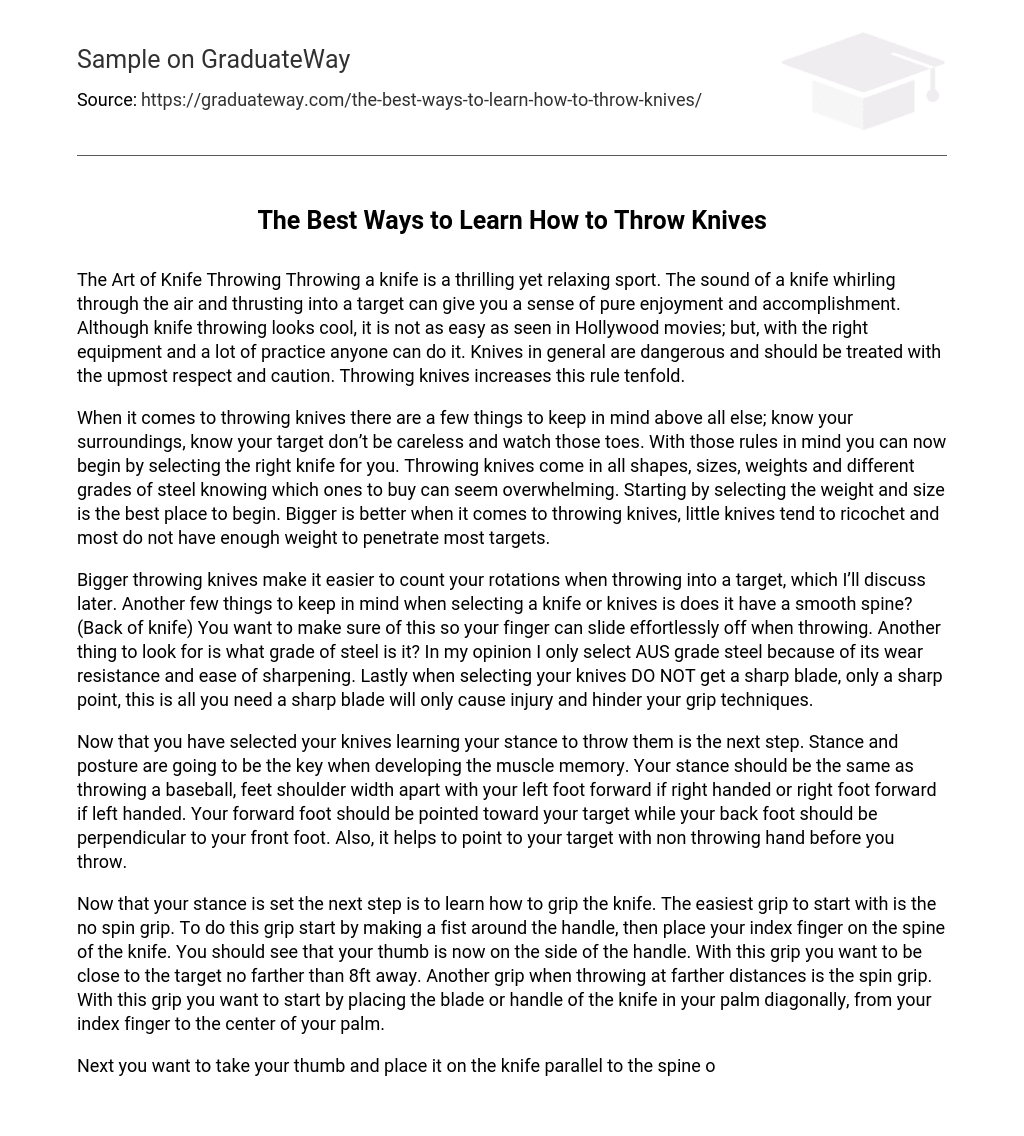The Art of Knife Throwing Throwing a knife is a thrilling yet relaxing sport. The sound of a knife whirling through the air and thrusting into a target can give you a sense of pure enjoyment and accomplishment. Although knife throwing looks cool, it is not as easy as seen in Hollywood movies; but, with the right equipment and a lot of practice anyone can do it. Knives in general are dangerous and should be treated with the upmost respect and caution. Throwing knives increases this rule tenfold.
When it comes to throwing knives there are a few things to keep in mind above all else; know your surroundings, know your target don’t be careless and watch those toes. With those rules in mind you can now begin by selecting the right knife for you. Throwing knives come in all shapes, sizes, weights and different grades of steel knowing which ones to buy can seem overwhelming. Starting by selecting the weight and size is the best place to begin. Bigger is better when it comes to throwing knives, little knives tend to ricochet and most do not have enough weight to penetrate most targets.
Bigger throwing knives make it easier to count your rotations when throwing into a target, which I’ll discuss later. Another few things to keep in mind when selecting a knife or knives is does it have a smooth spine? (Back of knife) You want to make sure of this so your finger can slide effortlessly off when throwing. Another thing to look for is what grade of steel is it? In my opinion I only select AUS grade steel because of its wear resistance and ease of sharpening. Lastly when selecting your knives DO NOT get a sharp blade, only a sharp point, this is all you need a sharp blade will only cause injury and hinder your grip techniques.
Now that you have selected your knives learning your stance to throw them is the next step. Stance and posture are going to be the key when developing the muscle memory. Your stance should be the same as throwing a baseball, feet shoulder width apart with your left foot forward if right handed or right foot forward if left handed. Your forward foot should be pointed toward your target while your back foot should be perpendicular to your front foot. Also, it helps to point to your target with non throwing hand before you throw.
Now that your stance is set the next step is to learn how to grip the knife. The easiest grip to start with is the no spin grip. To do this grip start by making a fist around the handle, then place your index finger on the spine of the knife. You should see that your thumb is now on the side of the handle. With this grip you want to be close to the target no farther than 8ft away. Another grip when throwing at farther distances is the spin grip. With this grip you want to start by placing the blade or handle of the knife in your palm diagonally, from your index finger to the center of your palm.
Next you want to take your thumb and place it on the knife parallel to the spine of the knife. Keep in mind that depending on the distance of your target, holding the blade or handle will vary. With these two grips you can now move on to executing a proper throw. With your stance and grips now in place you are now ready to start throwing. When using either of the grips I discussed you should not flick your wrist instead think of your arm as a Trebuchet catapult, one fluid movement. The first grip you’re going to want to start with is the no spin grip because of its easiness.
Remember when you use this grip the knife should not spin and you index finger should slide down the spine of the knife as you release it. After you are comfortable with this throw and feel you can back up to greater distances the spin grip will now be used from 8ft to how ever far back you can go. When using the spin grip you must pay attention to a couple things, first being your distance in relation to how many spins your knife makes. This will take time to master and will be the biggest learning curve when throwing a knife.
In order to master this you must start out close and work your way back counting how many spins your knife makes before it sticks into your target and the distance you were at when it landed; also you need to keep note whether or not you were holding the blade or handle. Second you need to pay attention to how your knife lands. If the knife handle lands facing upwards you need to move a little closer because you are over rotating. The same goes if the knives handle lands pointing downwards you need to move back because you are under rotating.
These adjustments shouldn’t be too much you should only need to move forward or backward a foot or two. Over time these adjustments will become easier and less frequent as long as you remember your distance, stance and grip. There are a lot of things to remember when throwing a knife but don’t let this discourage you from trying. Over time your muscle memory will take over and it will become easier. Throwing knives is a good skill to have whether if it’s for sport or to defend yourself in a survival situation. With a lot of practice and the right equipment you can take it anywhere.





